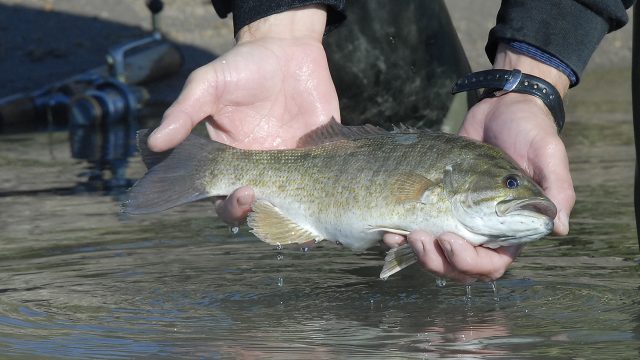Doug Leier: Catch And Release Fishing Has Become More Common

In a day and age where society kicks out new acronyms about as fast as smartphone apps, it’s no wonder that people start to forget what FFA or KFC even stand for anymore.
In some ways, when CRP is synonymous with habitat and ANS is quickly associated with threats to aquatic habitat, the goal of awareness and information is confirmed by mostly universal use without needing to explain
C&R fishing isn’t quite as familiar in outdoors circles as CRP, but catch and release has become more common as the number of lakes, reservoirs and managed fisheries have expanded two-fold over the past 25 years. Along with the growth in fishing waters is the understanding, use and acceptance of catch-and-release fishing.
As kid decades ago growing up in North Dakota I honestly don’t really even recall the concept of catch and release let alone the intentional practice. Eaters were kept because that’s why we were fishing. Many modern-day anglers still are fishing because they enjoy eating fish and keeping an occasional trophy while releasing others.
Having grown up in North Dakota, this transition has surprised me a little bit. Most anglers will keep a few fish for eating, and maybe save a fish-of-a-lifetime to send to the taxidermist. However, it seems catch-and-release has become more accepted even if it’s not as common statistically. Throwing back a “keeper” isn’t looked on with scorn much like when seatbelts use was becoming the law of the land while many resisted the implementation and use. Catch and release seems to follow some similar mindsets. Even if anglers themselves are keeping many of their fish they understand why others are releasing and the benefits.
And often, those anglers using the latest mobile apps and mapping units to pinpoint exact coordinates of hot spots, are the same folks who are often the greatest practitioners of catch-and-release fishing day after day.
Conventional wisdom says that some released fish will die. That’s a fact. But when done properly, catch-and-release can enhance angling in the long term.
Think of a fish caught and released a few times over the course of their life, rather than just being caught once and fried up. While fisheries biologists don’t feel that North Dakota needs specific regulations to restrict harvest of such fish at this time, releasing them does give other anglers the chance to catch them and enjoy the experience.
Here’s a few tips for catch-and-release angling:
- Try to decide to whether you might release a fish as soon as you hook it. In North Dakota, fish must be released immediately, as it is illegal to keep them in a livewell or on a stringer and then released later.
- Generally, land the fish quickly and don’t play it to exhaustion.
- Set the hook quickly to reduce the likelihood the fish will swallow the bait.
- Don’t put your fingers in the eyes or gills of the fish.
- Avoid removing mucous or scales.
- Get the fish back in the water as quickly as possible.
- If the hook is very deep within the fish, or it can’t be removed quickly, cut the line close to the fish’s mouth.
- Back the hook out the opposite way it went in.
- Use needle-nose pliers, hemostats, or a hook-out to remove the hook and protect your hands.
- Place the fish in the water, gently supporting the mid-section and tail until it swims away.
- Resuscitate an exhausted fish by moving it back and forth to force water through its gills.
The bottom line is that catch-and-release done correctly can help maintain and enhance a fishery, and most conscientious anglers are willing to do their part to ensure the future of North Dakota fisheries.




